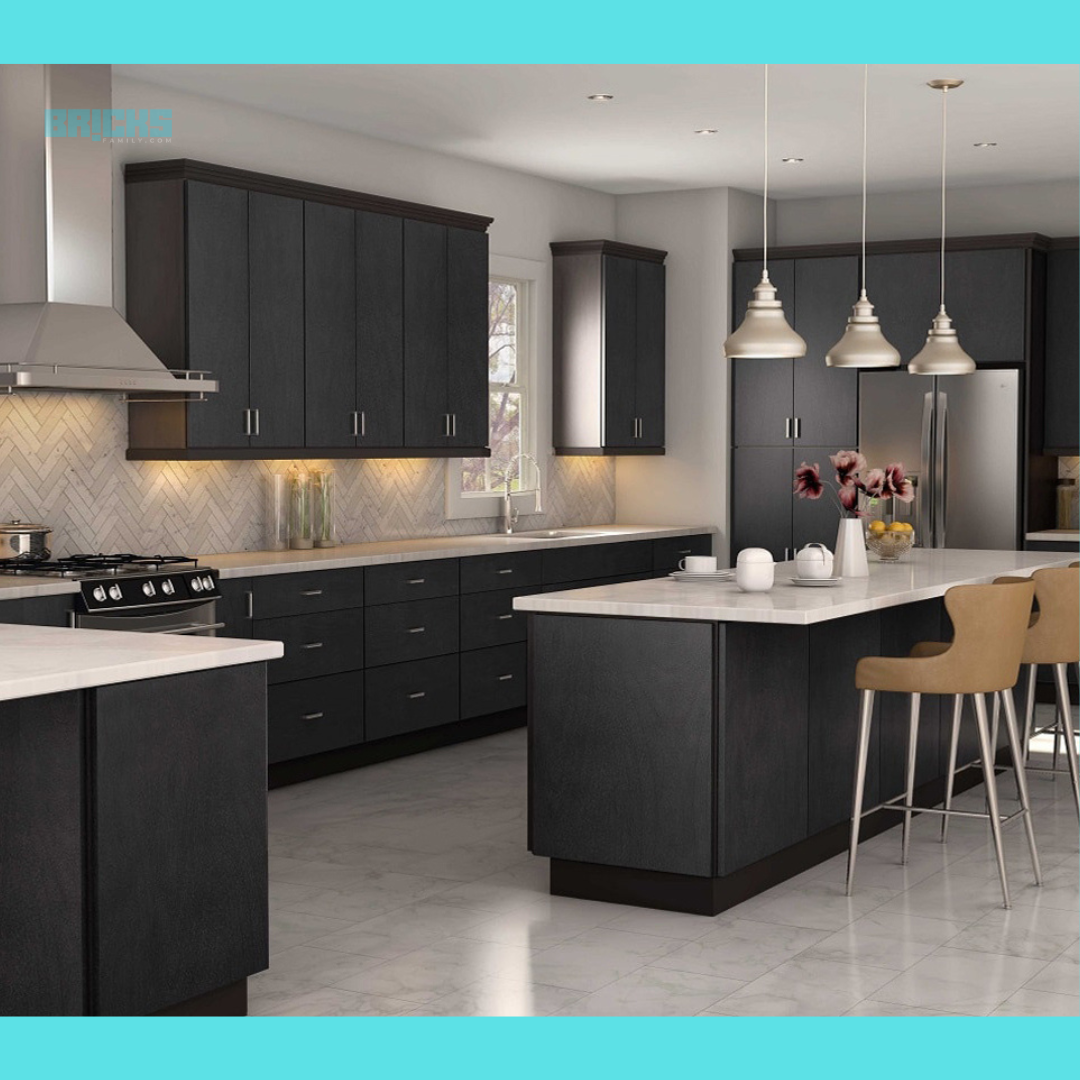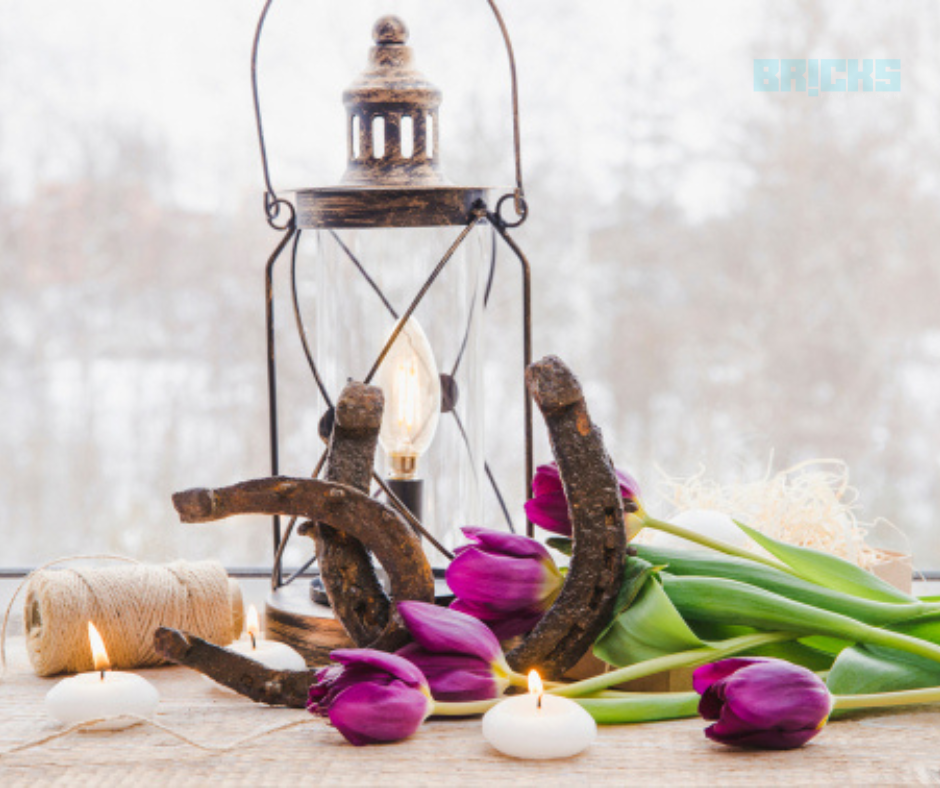Aspiring gardeners who want to plant pomegranate trees in their gardens must adhere to these fundamental guidelines. Discover the specifics of growing robust pomegranate plants and receive some helpful hints for their upkeep.
The main draws of pomegranate bushes are their juicy red fruits and delicious, edible seeds. Warmer climates are optimal for their growth, and they offer a number of health advantages. Some of the main characteristics of pomegranates are listed below:
• Pomegranate plants are small trees and bushes that bear fruits with delicious seeds that stick to their crimson outer wall. They thrive in warm climates, particularly in the Middle North, sections of Asia, and the Mediterranean region, where hot, dry summers are followed by chilly winters.
- For these plants to grow healthily, they need enough sunlight and soil that drains well.
Pomegranate fruits are rich in antioxidants, vitamins, and minerals.They are considered to be rather healthy and manageable crops because they are produced for their juice, as vegetables, and for ethnomedicine. Punica granatum is the scientific name for the pomegranate plant. Usually, it blossoms in three to six years.Some types can grow to be more than thirty feet tall and are called trees, or they can form medium-sized shrubs that are three feet tall. - They are generally deciduous in colder climates and shed their leaves in the winter; they are evergreen in warmer climates.In addition, they are planted for their beautiful leaves and crimson blossoms, which draw pollinators like as birds.
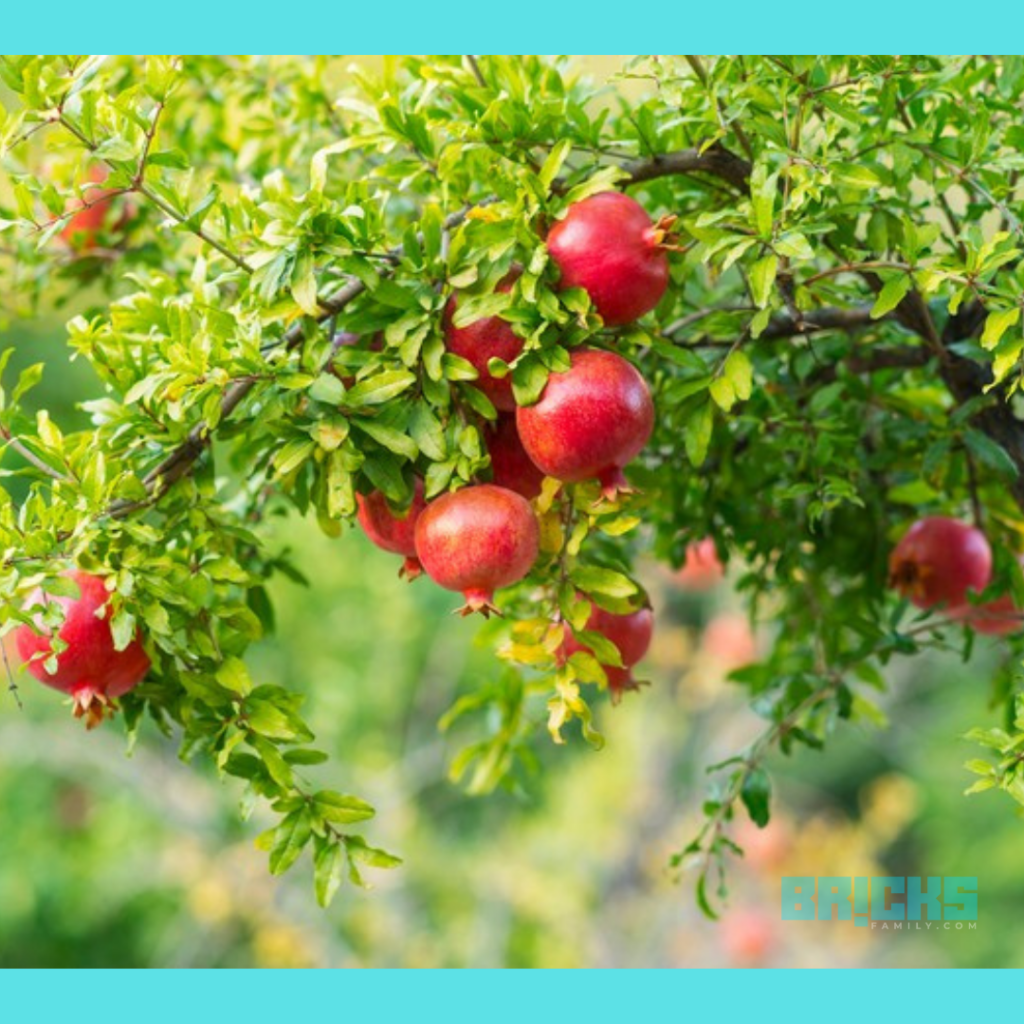
Pomegranate Plant Care
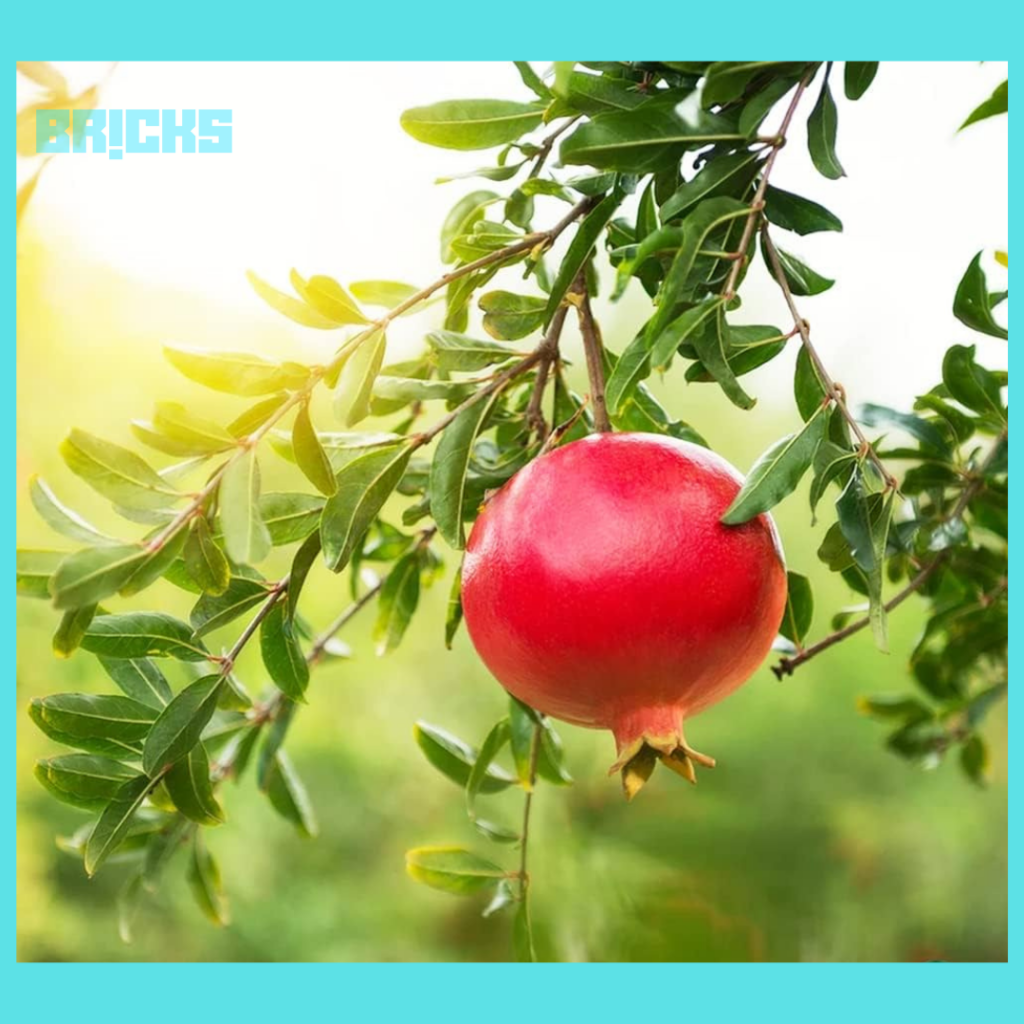
Here are the essential procedures for keeping pomegranate plants in good shape:
- When to Plant
It is recommended to plant pomegranate trees in the spring, following the last frost. This allows the plant to become established in the warm weather. - Choosing a Site for Planting
In the compound, pomegranate bushes adore warm, sunny spots. The soil in the area should have a reasonable moisture level and be well-drained. - Depth, Support, and Spacing
The purpose determines the spacing. Plant shrubs 6 to 9 feet apart to create a hedge. Plant them 15 feet apart in order for them to bear fruit. Root ball depth plus twice that width should be the planting hole’s dimensions. - Light Full sun is necessary for these plants. For optimal fruit development, plants require at least six hours of direct sunlight per day, even though they can tolerate some shade.
- Soil: Pomegranates may grow in a range of soil types, but they do best in well-drained soils. Although acid loam soil is their ideal, they can also grow in less-than-ideal alkaline soils.
- Water Pomegranate trees require frequent irrigation to maintain the quality and quantity of its fruits, even though they can withstand droughts. It is advised to give them a thorough watering every two to four weeks during dry spells, but avoid going overboard. Fruits may break and insects may appear if they are overwatered.
- Humidity and Temperature
USDA zones 7 through 10, which have temperate seasons and hot, dry conditions, are where these trees grow best. Furthermore, temperatures above 85 degrees Fahrenheit are ideal for growth. However, compared to most citrus trees, these trees are less cold tolerant. Varieties may also differ in this regard. - Fertilizer For the first two years after planting, young trees should be fertilized in November and March. After that, most of the time fertilizer wouldn’t be needed. Applying too much fertilizer can promote vegetative growth, which lowers fruit production.
- Pollination Although pomegranate trees are self-fertile plants, planting two or more trees will increase fruit harvest.
Pomegranate Plant Diseases and Pests
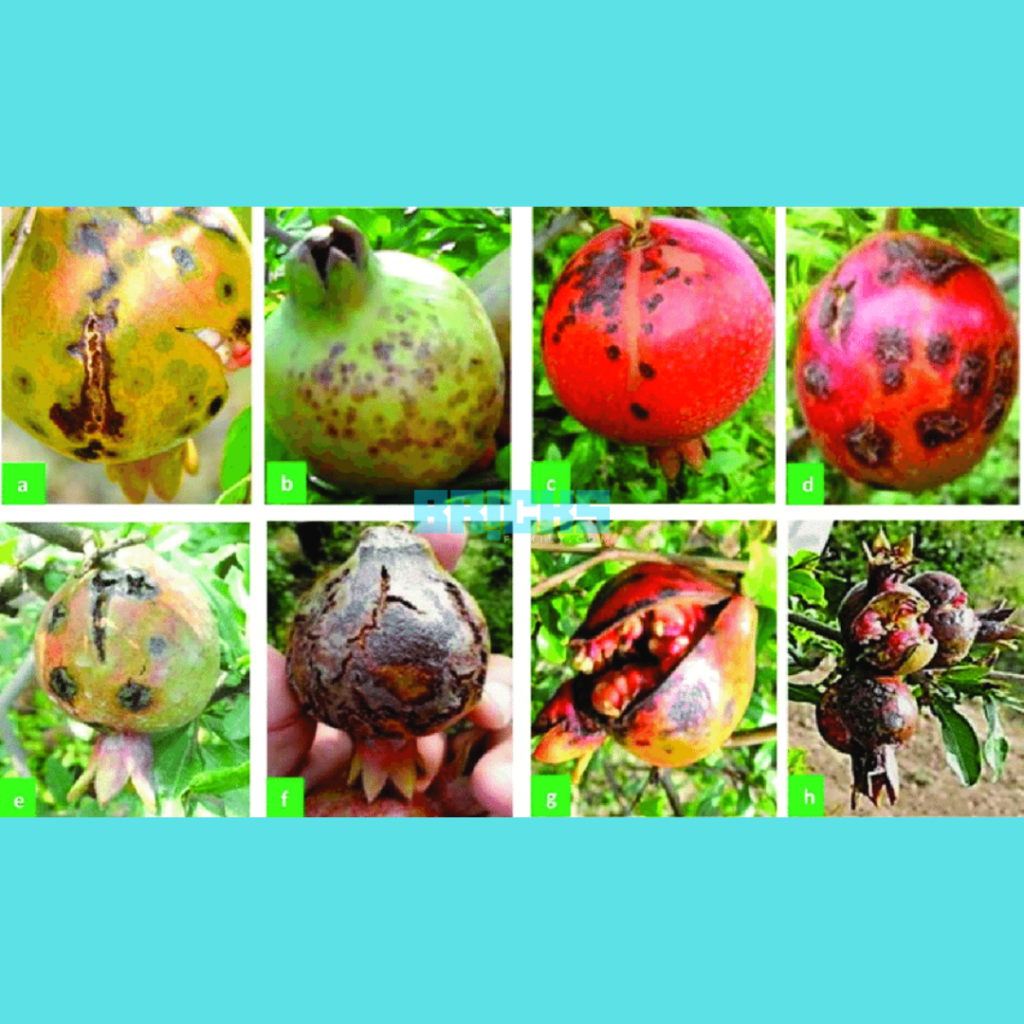
The most common insect pests in this category are
- Fruit borer
- Mealybugs
- Aphids
- Whiteflies
- Fruit-sucking moths
Spraying insecticides like dimethoate, deltamethrin, or malathion is one way to control these pests.
Fruit rot and leaf spot are the two main diseases that affect pomegranate plants.
- Use 2 grams of Mancozeb per liter of water to prevent leaf spot, which appears during the rainy season.
- To treat fruit rot, apply either 2 g of Kavach per liter of water or 1 g of Carbendazim, thiophanate methyl, Baycor, or Benomyl in September or October.
These measures are in most cases, effective.
Pomegranate Plant Harvesting
Fruit on pomegranate plants usually appears after three to six years of growth. The following signs indicate when the fruit is ready to be picked:
- The colour of the fruit has changed to deep red.
- The skin appears to have gone dull rather than bright and shiny.
- The shape is no longer round but rather more of a hexagon shape.
- Tapping the fruit produces a metallic sound.
Please be sure to use pruning shears to cut off the stem above the fruit when harvesting. Never try to remove the fruit from the tree by twisting or pulling it. Pomegranates will last for a good while after being pulled if you store them at a temperature of between 32 and 40 degrees.
Pomegranate Plant Varieties
There are numerous great pomegranate plant varieties available, in addition to the bulk of pomegranates that thrive only in appropriate weather. Among these are highlighted:
- “Nana”: This dwarf species of aggressive bush thrives in cold climes. It reaches a maximum height of four feet.
- “Sweet”: This variety is a member of a family of pomegranate plants that fruits earlier than the others. It is exceptionally sweet. It yields a substantial amount of crop as well.
- “Wonderful”: One of the most popular pomegranate plant varieties in the United States, it bears luscious, sweet-sour red fruits that ripen late in the summer.
- “Angel Red”: This kind of cultivar is distinguished by its fleshy, sweet-flavored seeds. It is incredibly productive and produces enormous red fruits.
- “Parfianka”: This variety is renowned for its exceptional flavor and ideal balance of sourness and sweetness. The fruit is perfect to eat fresh because of its deep crimson color.
- “Salavatski”: This kind of pomegranate thrives best in chilly areas. The range produces medium-sized, delicious, and sweet fruits.
- “Red Silk”: This pomegranate plant variety is distinguished by fleshy seeds that have a vivid scarlet outer layer. It tastes sweet and is ideal for juicing.
- “Kashmir”: This variety is highly valued for the profusion of its big, delicious fruit. The pulp can be consumed or used in cooking, and it has a hard skin.
- Each of these pomegranate plant kinds has a unique flavor, color, and growing environment. As a result, pomegranates are an easily cultivable fruit.
Pomegranate Plant Uses
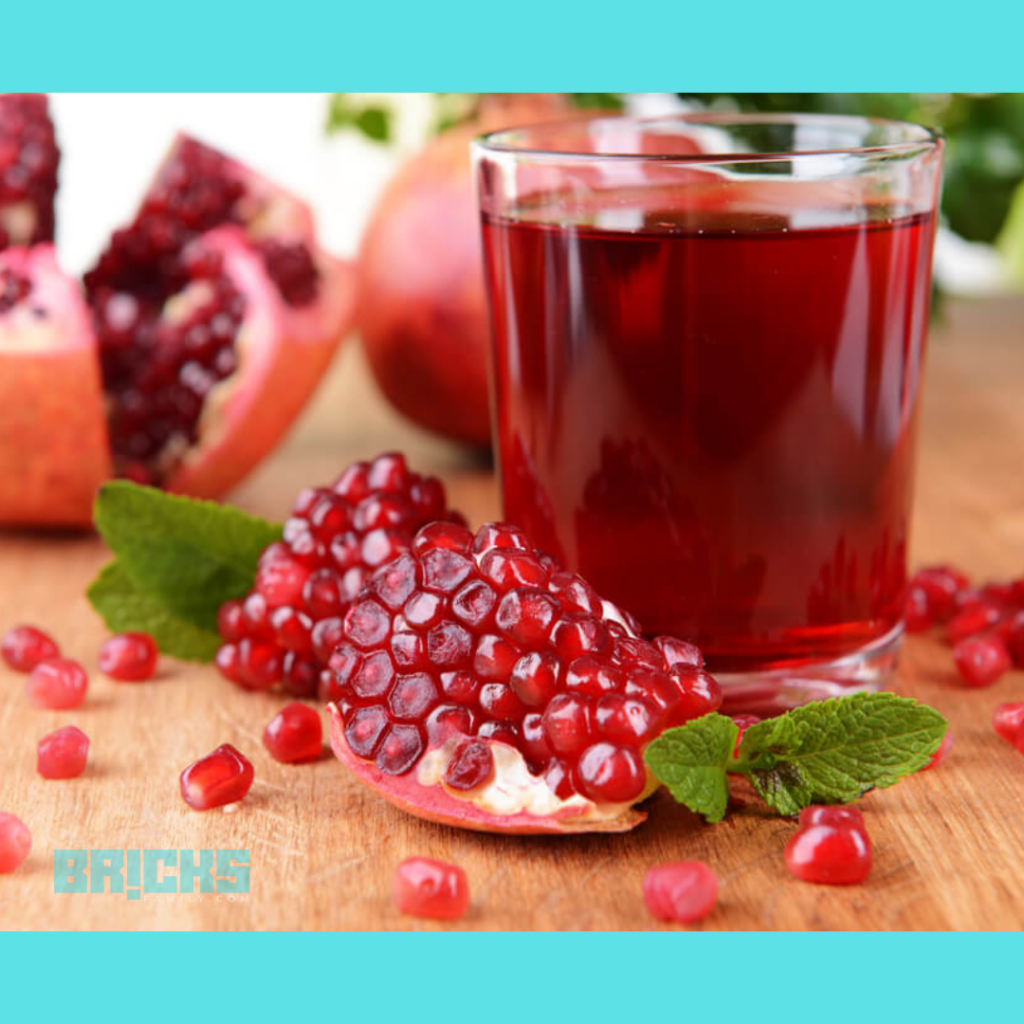
- Health Benefits: The amazing pomegranate, also known as the garnet fruit, has been used for ages to treat skin infections, intestinal worms, and overall poor digestion. However, additional research is being done, and it seems that eating these fruits may reduce the risk of heart disease, diabetes, and even cancer.
- Culinary Applications: Pomegranate juice and seeds can both be eaten raw. These seeds are a good source of fiber, vitamins, and minerals that are good for your health.
- Beauty and Cosmetics: Due to the antioxidants in pomegranate seed extract, skin care products containing this extract have a large market. They also go well with a variety of beauty products because of their pleasant and sweet scent.
- Cultural Significance: It is customary in Iran to commemorate Yalda Night, the longest night of the year. In keeping with this, the family gets together to celebrate the victory of light over darkness by eating pomegranates.
Conclusion to Pomegranate Plant
In conclusion, it is a good idea to include pomegranate plants in any garden. They yield delicious and nutritious fruits in addition to having a lovely appearance. When pomegranate trees have the right amount of sunlight, water, and insect management, they can flourish healthily. If they are well-managed, don’t forget to harvest them at the ideal time for optimal flavor. Pomegranates are fantastic for cooking, juicing, or even just putting them on your skin. Why then wait? Plant some pomegranate trees and reap their many advantages!
Also Read: How to Grow and Care for Chrysanthemum or Guldauadi plants










